Scottish Art News
Latest news
Magazine
News & Press
Publications
New Voices in Craft: Emerging Makers Recognised by Visual Arts Scotland
20.10.2025
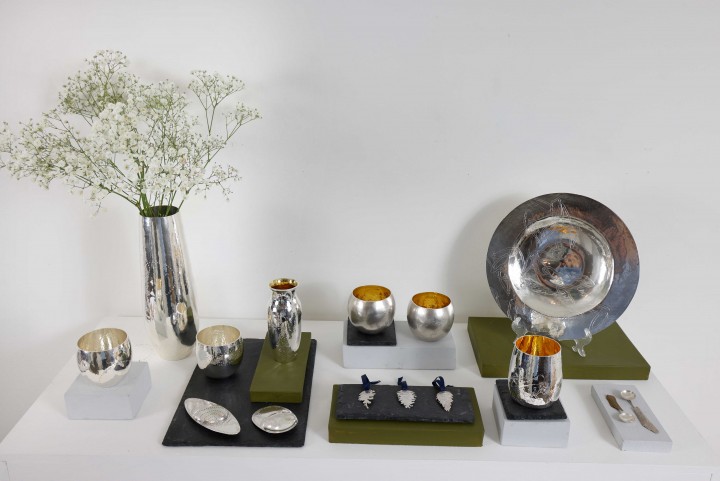
A young silversmith and a self-taught weaver have been named by Visual Art Scotland (VAS) as the winners of Scotland’s biggest development awards for craft. Scott Smith and Erin McQuarrie each received £7,000 - a bursary of £5,000 and a further £2,000 for mentoring - in the Inches Carr Craft Development Awards.
VAS President Tavienne Bridgewater said the shortlist of nine artist-makers was so strong that the organisation decided to make two awards instead of one this year, using up the legacy money VAS received from the Inches Carr Trust, which was wound up in 2022. Here is five makers to watch from the shortlist!
Scott Smith, silversmith (winner)
Scott, 27, graduated in silversmithing from Glasgow School of Art, staying on at GSA for two years as an artist in residence. He is also a former tenant of Marchmont House’s silver workshop, and a Queen Elizabeth Scholarship Trust award gave him the opportunity to do further training with Shetland silversmith Rod Kelly. He is now based in Aberdeen.
Scott grew up on a farm near Portsoy in Aberdeenshire and the area’s Pictish standing stones are a major source of inspiration for his functional and decorative silver vessels.
He says: “I’m really passionate about the North-east and its heritage. The Pictish stones in this area as not as well known as some others, and I want to bring the motifs and textures of these stones into my work. Also, my dad is a farmer, and I want to capture of the rhythms of the people who work the land into the things I make.”
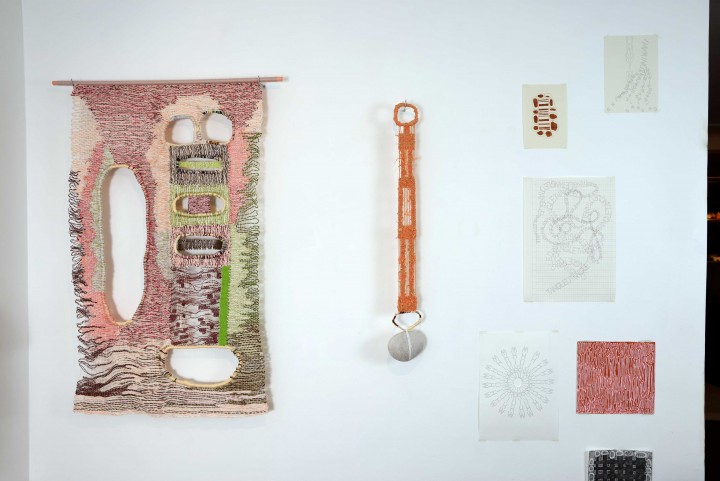 Wall hangs and sketches by Erin McQuarrie.
Wall hangs and sketches by Erin McQuarrie.
Erin McQuarrie, textile artist (winner)
Originally from Glasgow, Erin, 32, studied printed textiles at Glasgow School of Art, but it was while on a Fulbright Scholarship to the prestigious Parsons School of Design in New York that she became interested in weaving and became involved in the burgeoning fibre art movement.
Now based in Nairn, near Inverness, she makes wall hangings and tapestries using materials such as wool, linen and silk, making natural dyes from products like heather, broom and nettle, and building her own looms using everyday materials.
Earlier this year, she spent time on Orkney on an RSA Residency for Scotland, and will have a solo show in 2026 at the Pier Arts Centre in Stromness. She hopes to use the Inches Carr Award to purchase and learn how to use a floor loom.
She says: “I know my approach to tapestry and weaving is unconventional, and I think learning to use a floor loom will complement my hand-weaving practice, as well as allowing me to work on a much bigger scale.”
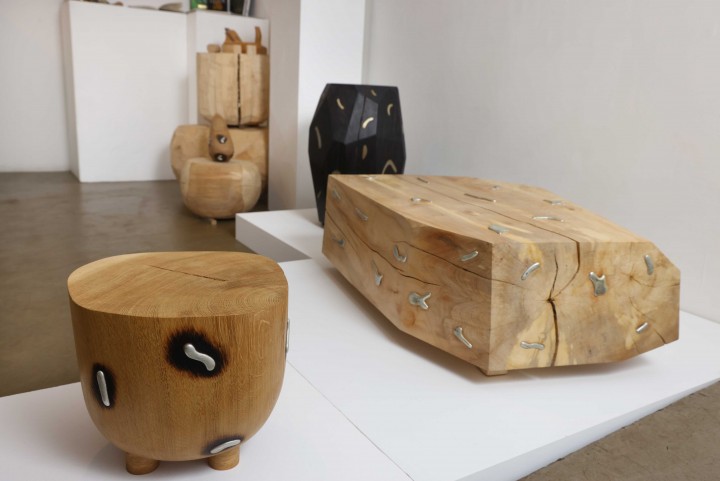 Sculptural pieces made with storm-felled wood and molten metal inserts by artist Richard Goldsworthy.
Sculptural pieces made with storm-felled wood and molten metal inserts by artist Richard Goldsworthy.
Richard Goldsworthy, sculptor
Having graduated from Edinburgh College of Art in 2019, Richard Goldsworthy is based at the Hugo Burge Foundation (formerly Marchmont House) in the Borders. Using storm-felled wood, he makes his distinctive sculptural pieces by carving, sanding and burning, and by working cast pewter into crevices in the wood. He describes his work as drawing out the natural features of the material, “a conversation between what I want to do and what the material wants to do”. However, his decision to fuse metal and wood was inspired by his recovery from a devastating accident he had as a competitive skier.
He says: “I broke my back and neck and had metal inserts put into my spine, and that got me thinking about metal fusing with organic material. Now I use that as a language to express my own artistic decisions and inspirations.”
This year, he has begun to develop a range of furniture pieces alongside his sculptural practice: “A new branch of the same tree”.
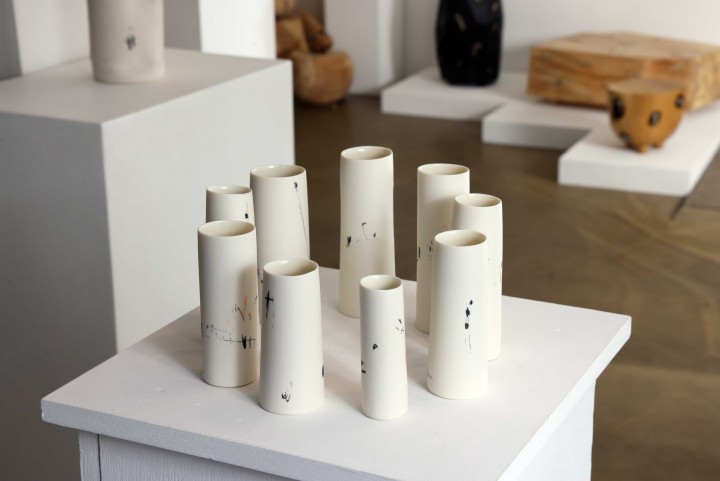 Ceremaic vases made by artist Jennifer Alford.
Ceremaic vases made by artist Jennifer Alford.
Jennifer Alford, ceramicist
Dublin-born Jennifer, who is based in Angus, came to ceramics 15 years ago after a career as a musician and composer. “I lost my dad in 2010 and was looking to do whatever gave me comfort, that’s when I discovered clay. After five years, I wasn’t getting any better, and not doing things by halves I want to have the same skills as a potter that I had a musician.”
That led to her applying to train at Craft Council of Ireland’s prestigious Ceramics Skills and Design Course in Thomastown, County Kilkenny. Now, her chosen medium is wheel-thrown porcelain, making elegant pieces which she marks with found materials, from twigs and stones to porcupine quills.
She says: “Porcelain is notoriously tricksy minx that doesn’t like to be thrown, or manipulated, or cooled too fast, so there are lots of failures. But I like to improvise and to be open to the opportunities of chance. I don’t want anything to look forced or self-conscious.”
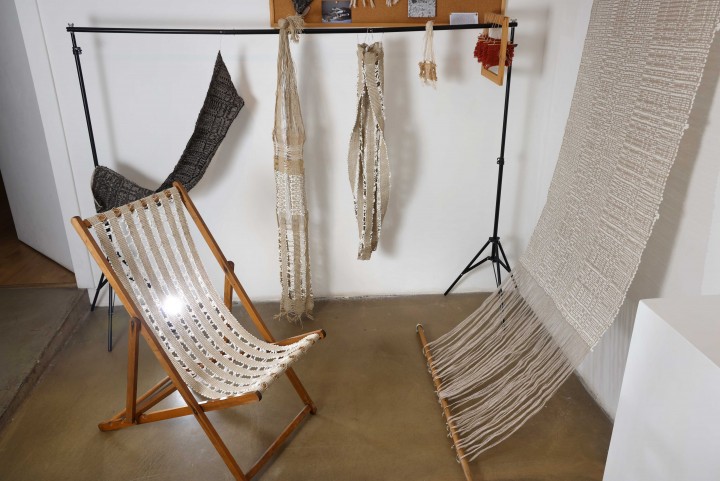 Textile works by Lynne Hocking.
Textile works by Lynne Hocking.
Lynne Hocking, textile artist
After a first career in human genetics and data science, Aberdeen-based Lynne brings her expertise as a scientist into her textile art.
“I left my job about 10 years ago and travelled around the world for nine months with my family, going to Central and South America and South East Asia. I spent a lot of that time reconnecting with my love of textiles, and learned to weave in Northern Thailand.”
Aware of the parallels between genetic coding and the way information is encoded in punch cards for a loom, she began to combine the two ideas in her work. “I have had my mitochondrial genetic information sequenced, which is passed down the female line, and know a little programming, which means I have been able to encode this in patterns. This also connects to the fact that seven generations of women in my family have been involved in weaving in North-east Scotland.
“I’m interested in who we are, where we come from, how we understand ourselves, and how we can use textiles to support these conversations.”
Read more about the shortlisted artists here.




